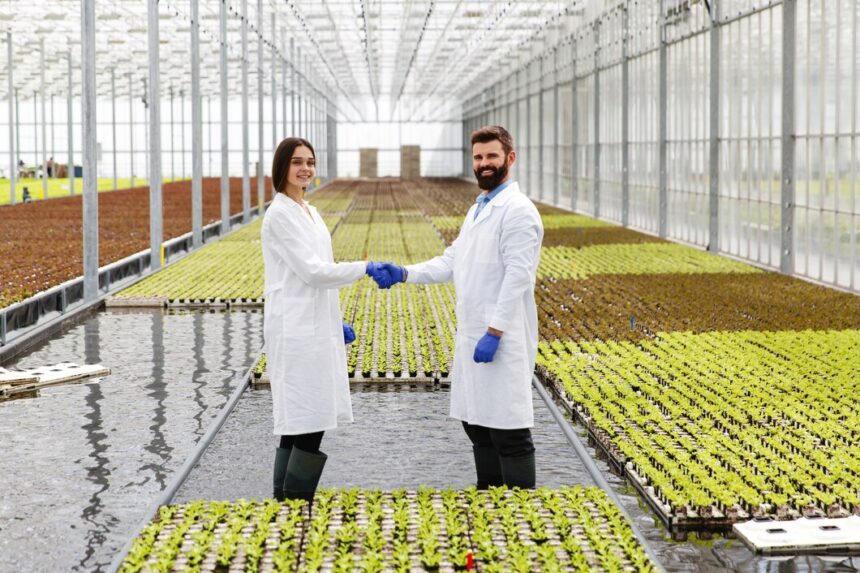Hydroponics, a method of growing plants without soil by using nutrient-rich water, is gaining traction among South African farmers due to its efficiency and sustainability. With the potential to maximize crop yields and use resources more effectively, hydroponic farming can be an ideal solution in areas facing water scarcity and limited arable land. Here’s a step-by-step guide to help South African farmers start their own hydroponic farm.
1. Understand the Basics of Hydroponics
Hydroponics involves growing plants in a controlled environment using nutrient solutions. The plants are usually grown in containers or systems that allow water and nutrients to circulate and reach the roots directly. This method has several benefits:
- Faster plant growth due to direct access to nutrients.
- Better space utilization compared to traditional soil farming.
- Reduced water usage by up to 90% compared to conventional farming.
2. Choose the Right Hydroponic System
There are various types of hydroponic systems, each suitable for different crops and budgets. The most common systems include:
- Nutrient Film Technique (NFT): Ideal for leafy greens like lettuce and herbs. The nutrient solution continuously flows over the roots.
- Deep Water Culture (DWC): Plants float on a nutrient-rich solution. This is perfect for crops that require more water, such as basil.
- Drip System: A versatile system that drips nutrient solution into each plant pot and can be adapted for larger crops like tomatoes.
- Wick System: A simple system where plants draw nutrients from a reservoir through a wick. This is ideal for small-scale setups or beginners.
- Aeroponics: Roots are suspended in the air and sprayed with nutrient solutions. This system offers high yields but is more technical and costly.
3. Select the Right Location
A hydroponic farm requires an indoor or greenhouse space where environmental conditions can be controlled. Ensure the chosen location has:
- Access to natural or artificial light: LED grow lights are a common supplement when natural light is insufficient.
- Temperature control: Ideal temperatures range from 18°C to 24°C for most crops.
- Humidity management: Too much humidity can lead to fungal diseases; aim for 50-70% relative humidity.
4. Set Up the Infrastructure
To start a hydroponic farm, you’ll need the following essentials:
- Reservoirs: To hold and circulate the nutrient solution.
- Pumps: To move the water and nutrient solution through the system.
- Grow Trays: Where plants are held as they grow.
- Growing Medium: Materials like coconut coir, perlite, or rock wool provide plant stability and support.
- pH and EC Meters: To monitor and maintain nutrient solution levels and pH balance (ideal pH for most hydroponic plants is 5.5 to 6.5).
- Nutrient Solutions: A mix of essential minerals such as nitrogen, phosphorus, potassium, and trace elements.
5. Select the Best Crops for Hydroponics
Hydroponics is suitable for a variety of crops, with leafy greens and herbs being the easiest to grow. Common crops include:
- Lettuce: Grows quickly and has consistent demand.
- Spinach: Thrives in nutrient-rich environments and has high nutritional value.
- Basil and Other Herbs: Popular for culinary use and easy to grow hydroponically.
- Tomatoes and Peppers: Require more space and support but offer high yields.
- Cucumbers: Grow well in vertical hydroponic setups with proper space allocation.
6. Create a Nutrient Management Plan
Developing a comprehensive nutrient management plan is crucial for the health of hydroponic plants. Nutrient solutions should:
- Be adjusted based on the specific needs of the crops being grown.
- Be monitored daily for pH and electrical conductivity (EC) levels to ensure nutrient uptake efficiency.
- Be refreshed periodically to prevent nutrient imbalances or contamination.
7. Manage Pests and Diseases
Although hydroponic systems are less prone to soil-borne diseases, they are not immune to pests and pathogens. Implement these practices:
- Integrated Pest Management (IPM): Use natural predators, sticky traps, and organic treatments to control pests.
- Sanitation: Keep the growing area clean to prevent mold and bacteria growth.
- Air Circulation: Use fans to maintain good airflow, preventing mold and mildew.
8. Monitor and Automate the System
Automation can make hydroponic farming more efficient and reduce the risk of human error. Invest in:
- Timers: To automate light cycles and irrigation schedules.
- Sensors: To track temperature, humidity, and water levels.
- Mobile Apps: Some systems integrate with apps to provide real-time data and remote control features.
9. Understand Legal and Market Requirements
Check local regulations related to hydroponic farming, particularly those involving water use and quality standards. Additionally:
- Market Research: Identify the best markets for your produce, such as supermarkets, restaurants, or farmers’ markets.
- Organic Certification: Although hydroponic produce may not be classified as “organic” in all regions, adhering to organic principles can help meet consumer demand for sustainable products.
10. Start Small and Scale Up
Begin with a pilot hydroponic setup to understand the nuances of the system and make adjustments as needed. Once you have gained experience and identified profitable crops, scale up your operation gradually.
Starting a hydroponic farm in South Africa can be a profitable and sustainable venture, especially for farmers looking to optimize space and resources. By selecting the right system, managing nutrients carefully, and embracing technology, South African farmers can successfully implement hydroponics and contribute to the future of innovative and sustainable agriculture.
Join 'Farmers Mag' WhatsApp Channel
Get the latest Farming news and tips delivered straight to your WhatsApp
CLICK HERE TO JOIN






